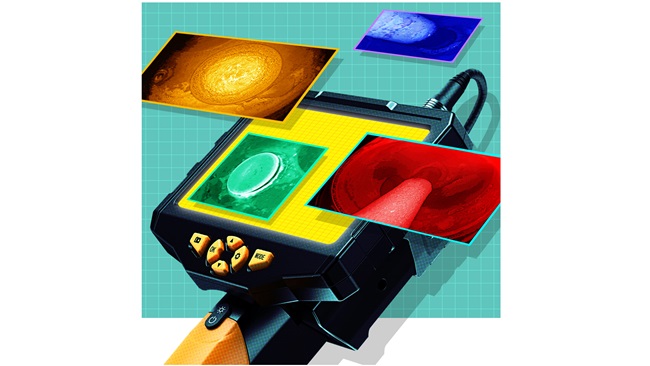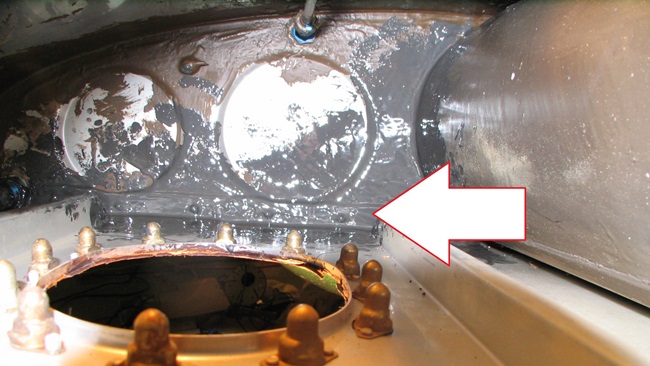Sticking to a plan
What price peace of mind?

Some expenses are calendar events that can be anticipated. These include annual or recurring inspections, such as the “A, B, C, D” checks used by some manufacturers. “A” checks usually come every 400 hours or so, “B” checks every six to eight months, “C” checks every two years, and “D” checks every seven to 10 years.
But component failures, wear and tear, service bulletins, airworthiness directives, and other surprises can deliver unpredictably huge, expensive maintenance curveballs. “On condition” maintenance programs may let operators fly for long periods of time—until an issue crops up, at which time it must be addressed quickly.
Of course, manufacturers offer warranties for aircraft purchased new, and maintenance plans for avionics, airframe, and engine inspections and repairs for “in service” aircraft—those (“used”) airplanes out of warranty. To cover the cost of parts, Bombardier has its SmartParts program, Gulfstream its PlaneParts, Dassault its FalconCare. Engine manufacturer Pratt & Whitney offers its ESP and ESP Gold programs, Williams its TAP Advantage and TAP Elite programs, and Honeywell its MSP and MSP Gold programs for engines and auxiliary power units. Independent provider Jet Support Services Inc. (JSSI) offers plans for all jet aircraft, engines, and APUs. All these plans spread out the cost of maintenance by charging operators per-hour fees. How much you pay chiefly depends on how much you fly per year, or per maintenance contract interval.
Textron Aviation, manufacturer of the popular Cessna Citation and Beechcraft King Air lines of jets and turboprops, has sold by far the most general aviation turbine aircraft. Teresa Ortega, now managing partner at Wichita training and consulting firm Ortega Aviation Services (ortegaaviation.com), served for 20 years as sales manager for Textron Aviation’s ProAdvantage maintenance programs. Now she advises a range of clients on maintenance strategies—among them, the Citation Jet Pilots owner-pilot association (CJP).
“Pilots sometimes have misconceptions about maintenance plans,” Ortega said. “For example, some think that an airplane’s warranty would cover any and all maintenance. Not true. You may need supplemental coverage from separate maintenance plans to make sure all parts and labor are covered on some repairs.
“Others think maintenance plans are a type of insurance plan, able to cover any part or repair procedure. Not so. Instead, think of them as programs to mitigate the cost of operations.”
Also, with Textron’s Citation maintenance programs—as well as those of other manufacturers—certain exclusions apply. Coverage is not extended to situations caused by abuse, corrosion, neglect, accident, or failure to follow prescribed maintenance actions. Other conventions are also observed: a pre-enrollment inspection may be required; maintenance must be performed at Textron service centers, using Textron parts; and enrollment fees, waived for new airplanes, are sometimes required when in-service airplanes sign up for the first time.
Citations can be covered under three different maintenance programs. ProParts covers airframe and avionics components only. It’s an impressive package: Scheduled and unscheduled maintenance; service bulletins; plus exchanged or repaired (Textron) parts such as actuators; gauges; wear items like tires, O-rings, and light bulbs; and even entertainment systems.
The ProTech program covers the labor to install all the above covered parts, plus labor for inspections, scheduled and unscheduled maintenance, mandatory service bulletins, any engine removals and installations, and much more. Engine washes, out-of-warranty structural parts labor, Wi-Fi systems, and labor to repair interior upholstery, cabinetry, and entertainment systems are excluded. Enrollment in ProParts is a generally a prerequisite to having ProTech, but like other aspects of these programs, owners can negotiate coverage without ProTech. This often happens when an owner uses a favorite non-Textron shop located at his or her home airport. The trouble here is that labor costs, at fixed hourly rates under ProTech, could well be unpredictable when using an out-of-coverage facility.
TAPAdvantage Blue plans cover those Citations equipped with Williams engines, and PowerAdvantage+ those having Honeywell or Pratt & Whitney Canada engines. Those having ProTech coverage can essentially have nose-to-tail coverage because it can fill in the labor “gap” for PowerAdvantage+; it takes care of the labor for removing and installing rental and core engines.
Under these comprehensive engine programs, the main features include:
- Parts and labor for major periodic inspections, plus oil analysis and com ponent repairs.
- Parts and labor for overhaul, hot section inspections, routine inspections, and service bulletins.
- Rental engines at fixed rates.
- Engine freight to and from Williams International.
- Life cycle fatigue items, on Honeywell and Pratt & Whitney engines.
- Life cycle-limited components due to expired life on Williams engines.
- TAPAdvantage Blue covers Williams engines for damage caused by FOD (foreign object damage), lightning strikes, and bird strikes.
By the way, that FOD coverage for Williams engines is unusual. Under most other industry programs FOD isn’t covered. Instead, owners must make insurance claims to have the damage covered. That’s just one good example of where insurance shows its value relative to repairs.
Want other examples where insurance can cover what maintenance plans don’t? Let’s say the $60,000 (apiece) front windshield panes on your Mustang get blasted by gravel from jet blast. Or their interior surfaces are scratched by a diamond ring during a checklist-required check of the avionics cooling fan—which can create blinding reflections owing to a scratch’s prism effect. (It’s happened.) ProParts won’t cover the cost of replacement windshield(s) in those cases. But should the windshield delaminate over time—a normal wear process—ProParts will come through.
There’s a lot to know about maintenance plans, and so many coverage details, negotiation points, conditions, and exclusions that we can’t address them all in this space. That’s where experts like Ortega come into play. Let’s just say that without an airframe, avionics, and engine parts and labor plan in effect you risk being exposed to shop bills that might equal or exceed the value of your airplane, and significantly lower its resale value.
Were you hoping to skip enrolling in a program, thinking you’d get away with saving money in the long run? Bad idea, because Textron and others keep close track of service histories and trends. They know better than anyone what will fail, wear out, or come due. That’s how they know to price their rates.
Besides, under some manufacturers’ policies, an owner selling a covered airplane may be eligible for a healthy refund of any unused balances that have accrued in their maintenance plan accounts. And the buyer signing up for his or her own plan coverage may have the enrollment fee waived. Then there’s the peace-of-mind element: the buyer can be confident that the airplane’s been well-maintained. So, owners keeping maintenance plans in effect aren’t just adhering to sound operating practices. They’re building a major selling point.



